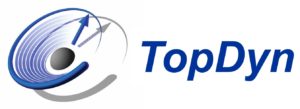

Seminar über die Physik der kondensierten Materie (SFB/TRR173 Spin+X und SFB/TR288 Kolloquium, TopDyn-Seminar)
May 2, 2019 at
2 p.m.
in
MAINZ-Seminarraum, Staudinger Weg 9, 03-122
Univ-Prof. Dr. Jure Demsar
Univ.-Prof. Dr. Hans-Joachim Elmers
Univ.-Prof. Dr. Mathias Kläui
Univ.-Prof. Dr. Thomas Palberg
Photoemission response and dynamics of excited states by means of one-step model of photoemission
Jan Minar (University of West Bohemia, Pilsen, CZ)
Angle-resolved photoemission spectroscopy (ARPES) is a leading experimental probe for studying the electronic structure and complex phenomena in quantum materials. Modern experimental arrangements consisting of new photon sources, analyzers and detectors supply not only spin resolution but also extremely high angle and energy resolution. Furthermore, the use of photon energies from few eV up to several keV makes this experimental technique a rather unique tool to investigate the electronic properties of solids and surfaces. On the theoretical side, it is quite common to interpret measured ARPES data by simple comparison with calculated band structure.
However, various important effects, like matrix elements, the photon momentum or phonon excitations, are in this way neglected. Here, we present a generalization of the state of the art description of the photoemisison process, the so called one-step model that describes excitation, transport to the surface and escape into the vacuum in a coherent way. Nowadays, the one-step model allows for photocurrent calculations for photon energies ranging from a few eV to more than 10 keV, for finite temperatures and for arbitrarily ordered and disordered systems, and considering in addition strong correlation effects within the dynamical mean-field theory. Application of this formalism in order to understand ARPES response of new materials like low-dimensional magnetic structures, Rashba systems, topological insulator materials or high TC materials will be shown.
In this presentation I review some of the recent ARPES results and discuss the future perspective in this rapidly developing field.